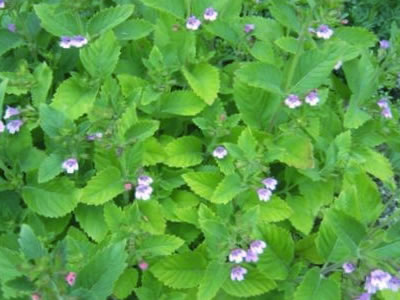Calamint has been used in Europe as a medicinal herb for centuries to treat wet cough, fever, indigestion, flatulent colic, insomnia and depression.
Calamint (nepitella, basil thyme, calamint, lesser calamint) is a perennial shrub and a member of the Mint family. It is very common in central and southern Europe. Calamint is used as a cooking spice in Italian cuisine where it is commonly called mentuccia, nipitella or nepitella.
Calamint has similar properties as peppermint. It was used as a medicine in medieval times. Basil thyme is aromatic, diaphoretic, expectorant, febrifuge and stomachic. It promotes sweating, thus is used to disperses mucus and fluids and inflammatory heat in the lungs and air passages, and treat wet coughs, fevers and feverish colds. Today it is still recommended for respiratory infections by medicinal herbalists.
Basil thyme tea was a common remedy for stomach complaints. It was popular in the Middle Ages as a treatment for the stomach. Calamint infusion is help relieve indigestion, flatulent colic and improve weaknesses of the stomach.
Calamint has a sweet, aromatic odour. It has calming properties and can be used to relieve nervous tension, depression, insomnia and painful menstruation.
How to make a calamint tea
– Dried calamint leaves 10g
– Water 1 cup
– Put the leaves in a cup
– Pour boiling water over it
– Leave for 20-60 minutes
– Drink half, 2-3 times a day
Please note, calamint is not suitable for pregnant women, as they may cause miscarriage.
Read more information about natural remedies for insomnia.



